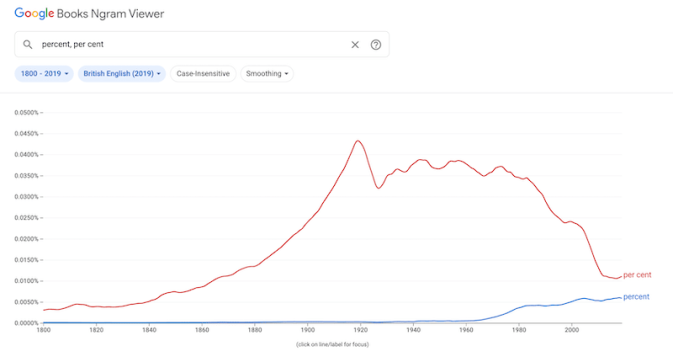
First let's get our terminology right. In some cases "percent" and "percentage" can be interchangeable, but the easiest way to choose the right word for the right situation is to use "percent" with a number and "percentage" without a number. Examples:
"Percentage" without a number: What percentage of the chocolate was missing?
"Percent" with a number: Forty percent of the chocolate was missing
'Percent' Versus 'Per Cent'
In American English, when you write out the word "percent," it's one word.
It's more common to see the two-word version — "per cent" — in British English. The one-word version is definitely gaining ground in Britain, but the two-word form is still more common.
The evolution of the word is kind of interesting. It started out as the two-word Latin phrase "per centum," which means "by the hundred," and over the years got shortened to the two-word English version with a period after "cent" to show that it was an abbreviation of "centum," then appeared as two words without a period, and is now quite established as a single English word.
Singular or Plural?
Sometimes people ask whether percentages are singular or plural, and as is so often the case, the answer is "It depends." If you're referring to a percentage of something, then that something determines whether you use a singular or plural verb. (In technical terms, that "something" is called the object of the preposition. The preposition is the word "of.") Here are two examples:
"Forty percent of the chocolate is missing." (In that sentence, "the chocolate" is singular so you use a singular verb: "is.")
"Forty percent of the chocolate chips are missing." (In that...
Keep reading on Quick and Dirty Tips
Tidak ada komentar:
Posting Komentar